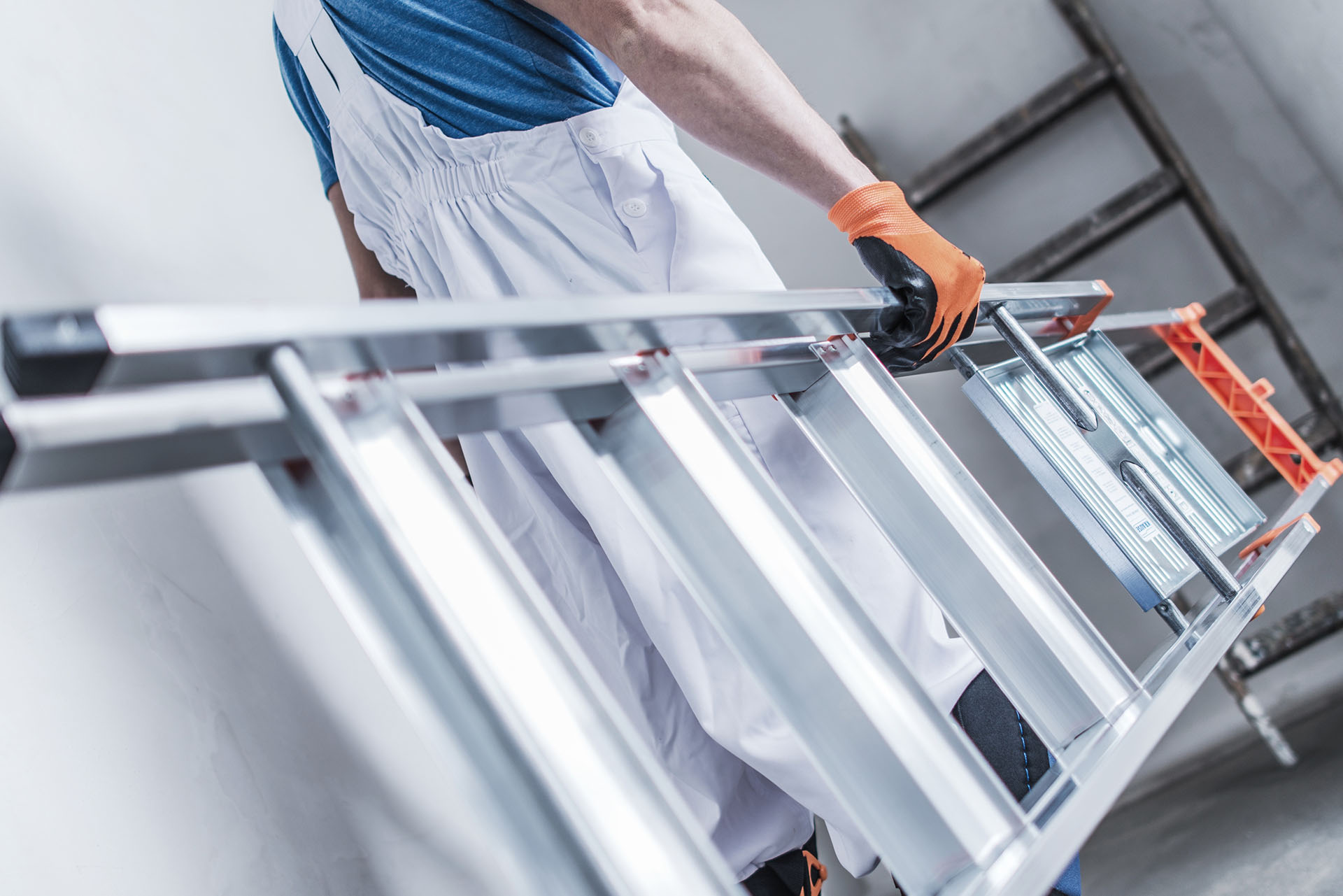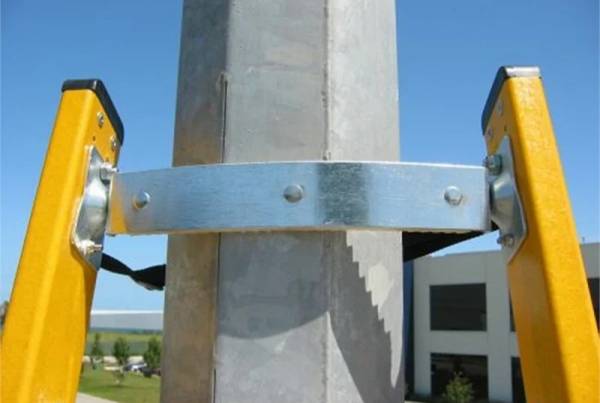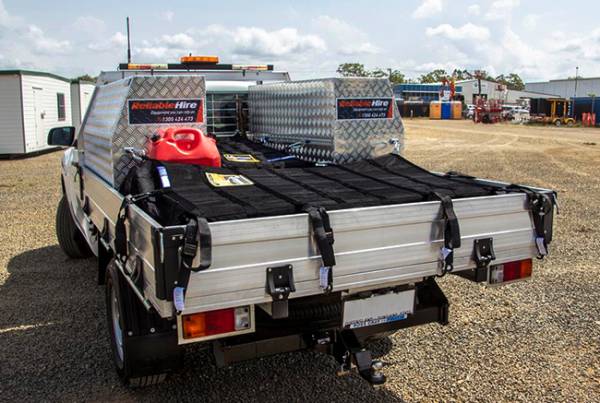Every year, Safe Work Australia reports that falls from height remain one of the top three causes of serious workplace injuries, and more than half of those incidents involve ladders. It’s a sobering reminder that even seasoned professionals can underestimate the risks when climbing a few steps off the ground. Whether you’re installing electrical conduit on a commercial site or stocking shelves in a warehouse, ladder safety isn’t optional, it’s mission-critical.
Platform stepladders are purpose-built to reduce those risks. Their wide, stable work platforms, robust handrails and industrial load ratings give you a safer footing than traditional A-frames, yet accidents still occur when fundamental precautions are ignored. For construction crews, maintenance teams and facility managers, understanding and applying step ladder safety principles can be the difference between a routine task and a recordable incident.
Today’s guide zeroes in on professional use cases, workplace safety standards and the advanced features that make a safety ladder with platform the smartest choice on site. You’ll learn how to recognise common hazards, set up correctly, work confidently and keep your equipment in peak condition, all while meeting or exceeding regulations. By the end, you’ll know exactly how to integrate step and ladder safety into daily workflows and why Vetner’s range of industrial-grade solutions deserves a spot in your toolkit.
Understanding the Basics of Platform Stepladder Safety
Platform stepladders are engineered for the demands of commercial job sites, giving you the stability and reach that standard A-frames can’t match. Several design elements work together to elevate ladder safety and keep professionals productive:
- Wide, anti-slip work platform
- Integrated handrails or guardrails for secure three-point contact
- Industrial load ratings of 150 kg–180 kg, accommodating both operator and tools
- Robust spreader braces and locking mechanisms that resist twist and sway
- Non-conductive fibreglass options that meet electrical safety requirements
- Slip-resistant feet and optional castors with foot-activated brakes for easy positioning
These features allow electricians, HVAC techs and warehouse staff to focus on precise tasks instead of balancing acts.
Still, even the most advanced equipment has limits. Keep an eye out for these common hazards before your team leaves the ground:
- Damaged or missing feet that compromise traction
- Worn treads or loose rivets on steps and platform surfaces
- Undeployed spreader braces or partially engaged locks
- Ladders set up on uneven, unstable or slippery flooring
- Overloading the ladder beyond its rated capacity
- Using metal ladders near live electrical conductors
- Climbing while carrying bulky gear instead of using tool belts
- Environmental factors such as wind, cluttered work zones or inadequate lighting
Recognising these risks is the first step to effective step ladder safety.
Preparing for Safe Ladder Use
Before a single boot leaves the ground, a thorough inspection is non-negotiable. Professionals are expected to document these checks as part of their Job Safety Analysis, and auditors will ask for proof.
Inspect for damage
Start with a slow, methodical scan, top to bottom, front and back, checking:
- Cracks, dents or bent rails that weaken structural integrity
- Loose rivets, missing bolts or worn hinge pins that could collapse under load
- Frayed fibreglass or sharp metal burrs that signal fatigue
- Damaged anti-slip feet or castors that reduce surface grip
- Faded safety labels, load-rating plates or compliance stickers, no label, no use
Any ladder that fails inspection is tagged “Out of Service” and removed until an authorised repair. This process keeps your site aligned with AS/NZS 1892 and eliminates guesswork when inspectors arrive.
Set it up right, every time
Even a pristine ladder becomes hazardous if positioned poorly. Follow these best-practice steps:
- Place the ladder on a stable, level surface, use levellers or anti-skid mats on uneven floors.
- Fully open the safety ladder, engage spreader braces and double-check platform locks.
- Verify all four feet make solid contact; never prop a leg with off-cuts or bricks.
- Position the ladder so your torso stays between the rails, no twisting mid-task.
- If wind speeds exceed site limits or work is near doorways, postpone or barricade the area.
Select the right ladder for the task
Choosing correctly starts with the job spec:
- Height: The platform should sit just below your work level, keeping shoulders under the top guardrail.
- Material: Opt for non-conductive fibreglass around live circuits, lightweight aluminium for general access.
- Load rating: Factor in body weight plus tools, select 150 kg or 170 kg industrial ratings to stay compliant.
- Added features: Safety gates, handrails or tool trays minimise repositioning and reduce fatigue.
A quick reference chart on the job board helps crews match ladder specs to task requirements, streamlining pre-start approvals.
Practices for Safe Ladder Usage
Once you’re on the rungs, strict technique is what keeps a routine task from turning into a lost-time injury. The following best practices align with AS/NZS 1892 and most site safe-work procedures.
Maintain three points of contact
Keeping two hands and one foot, or two feet and one hand, on the ladder at all times stabilises your centre of gravity and limits sudden slips. Grip the handrails or side rails firmly; never rest a forearm or lean an elbow. If the job requires two-handed work, use the platform’s integrated guardrail for support and secure your tools in a belt or on the ladder’s purpose-built tray.
Respect the no-reach zone
Overreaching is a leading cause of falls. As a rule, your belt buckle should stay between the ladder rails. If you feel the need to stretch, descend, reposition the safety ladder with the platform and climb again. On commercial sites, supervisors should enforce this policy and include it in toolbox talks.
Choose footwear and carry gear correctly
Slip-resistant boots with intact tread are mandatory on most professional sites. Combine them with a well-fitted tool belt so hands remain free for climbing. When heavier equipment is required, drills, conduit benders, paint cans, lift it with a rope or hand it up from ground level rather than carrying it while ascending.
Quick reference checklist for every ascent
Before your boot leaves the ground, run through these points:
- Is the ladder locked open, spreaders fully engaged and platform latch secured?
- Are you wearing approved PPE, including slip-resistant footwear?
- Do you have both hands free, with tools stowed safely?
- Is the work zone clear of foot traffic, wind gusts or overhead hazards?
- Do you have a clear plan to reposition rather than lean or twist?
If any answer is “no,” fix the issue before climbing. Supervisors should reinforce this checklist during pre-start meetings to embed step ladder safety into daily culture.
Post-Use Care and Maintenance
A platform stepladder is capital equipment, and like any tool on a professional site it earns its keep only when it’s in top condition. End-of-shift routines preserve performance, comply with regulations and extend service life.
Clean after every task
Construction dust, paint overspray and metal filings reduce traction on treads and platforms. Before stowing the ladder:
- Wipe rails, steps and platform with a damp cloth then dry thoroughly
- Clear mud or sealant from anti-slip rubber feet to maintain ground grip
- Check castor brakes for embedded debris that might prevent full locking
Inspect, then record
A quick post-use inspection catches issues that a pre-use check may miss:
- Look for hairline cracks, loose rivets or bent spreader arms caused by the day’s workload
- Test the platform latch and handrail fixings for smooth, positive engagement
- Verify compliance labels remain legible; order replacements if fading begins
Document findings in the maintenance log so supervisors can schedule repairs or order parts before the next job cycle.
Store for longevity
Professional sites often overlook storage, yet it’s one of the easiest ways to protect a safety ladder with platform:
- Rack ladders horizontally on padded supports or hang vertically by dedicated brackets
- Keep units in a dry, shaded area—fibreglass rails degrade under prolonged UV, aluminium corrodes when left in standing water
- Secure storerooms to prevent unauthorised use after hours
Prioritise Safety and Choose Quality Equipment
Falls from height remain one of the most preventable incidents on professional job sites, yet only when every worker, supervisor and contractor treats ladder safety as a non-negotiable standard. By integrating thorough inspections, correct setup, disciplined climbing techniques and diligent post-use maintenance, your team transforms a potential liability into a productivity asset. A platform stepladder isn’t just another piece of gear; it’s a critical component in your hierarchy of risk controls, keeping tasks on schedule and people out of the medical bay.
Ready to fortify your height-safety strategy? Explore Vetner’s extensive range of platform stepladders, tool trays, safety gates and fall-prevention accessories. If you’re unsure which ladder best suits your project requirements, call Vetner’s experts or visit our showrooms for tailored, no-nonsense advice.



